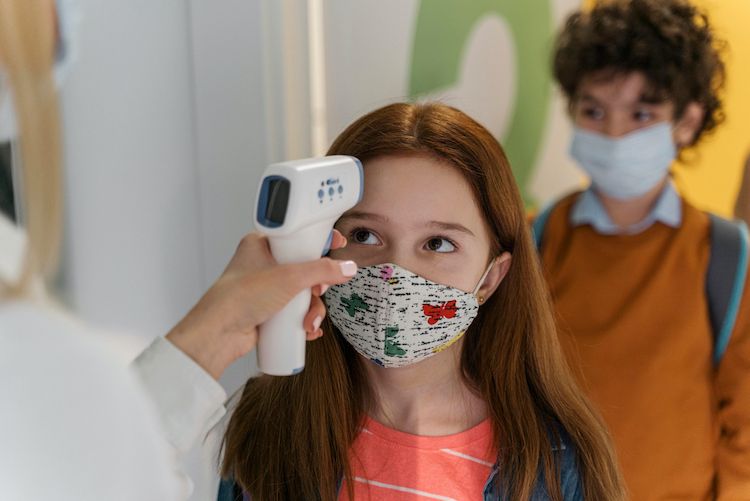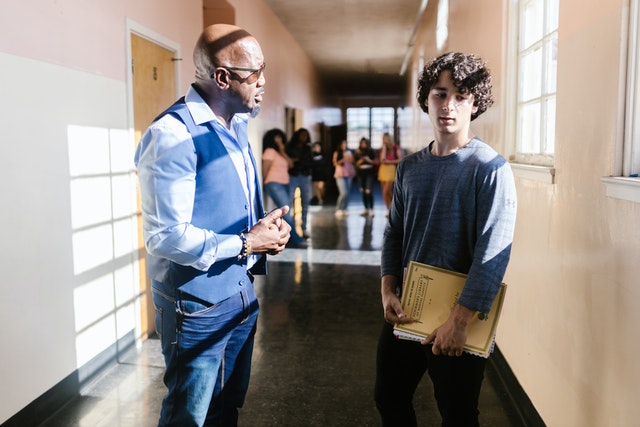How Schools Can Adapt Pandemic Protocols to Support Students’ Mental Health
 In recent weeks, governors, mayors and superintendents have discussed plans to reopen schools and get “back to normal” in the fall.
In recent weeks, governors, mayors and superintendents have discussed plans to reopen schools and get “back to normal” in the fall.
For schools, seeking a return to normalcy is only natural, but it may actually be counterproductive. Students coming back through our doors in the fall will be carrying the stress, anxiety and trauma of the past year.
All of the hard work schools have done since March 2020 to build out health and safety measures and mechanisms does not have to go to waste just because the likelihood of severe illness and death from the virus has been diminished. Schools can translate those protocols to address mental health.
1. Destigmatize mental health challenges by integrating questions about mental health into daily COVID-19 health screenings.
Two years ago, the idea of having to undergo daily temperature checks and health screenings as an entry ticket to a school building would have seemed ludicrous. But it has become so commonplace now that people have adapted their morning routines to it. It’s almost an afterthought.
Schools can work toward a similar comfort level with mental health conversations. One strategy for this includes asking every student how they are feeling every day. This can be as simple as adding a question to the morning health check, such as, “How are you doing today emotionally?” or “Is there anything specific on your mind today?”
2. Build a strong threat assessment system that mimics COVID-19 response protocols to address concerns before they become greater issues.
At this point, most schools have strong and robust COVID-19 response protocols in place to mitigate and minimize risk, such as mask-wearing, social distancing, contact tracing and quarantining. A similar process can be used to detect potential threats to campus safety.
A threat assessment is a process for determining a student’s risk for violence or self-harm by gathering data. In this case, “data” does not necessarily mean numeric data, but any relevant information about that student’s communication and behavior, about any stressful or negative events they have experienced, and about the resources the student has at their disposal to address these difficulties.
All of this information, together, can help school staff identify students who may be a threat to themselves or others, and evaluate concerns through a threat assessment system.
3. Utilize resources that have been dedicated to contact tracing to strengthen connections with families.
Research has shown that having stronger connections between school and home improves a child’s chances of success. Knowing the challenges children have navigated over the past 15 months, and how embedded they have been with their families during remote learning, we should be prioritizing this home-school connection now more than ever.
Schools that have invested the time and effort to ramp up contact tracing can repurpose those resources to make calls home to families to strengthen these connections and gain a better understanding of what families are facing from week to week. This can provide valuable insight into students’ mental health and also create stronger relationships between families and school staff, which would be a helpful foundation to lean on should any issues arise.
Excerpted from “How Schools Can Adapt Pandemic Protocols to Support Students’ Mental Health” by Chris Joffe, founder and CEO of Joffe Emergency Services, a provider of emergency response training, event safety and disaster preparedness supplies. Read the full article online in EdSurge.
Source: EdSurge | How Schools Can Adapt Pandemic Protocols to Support Students’ Mental Health, https://www.edsurge.com/news/2021-06-16-how-schools-can-adapt-pandemic-protocols-to-support-students-mental-health | © 2011-2021 EdSurge Inc
CHC offers free community education sessions for educators. Join us to learn practical teaching strategies you can use in your classroom to help more kids reach their promise and potential. Educator sessions are led by experienced educator/clinician teams from Sand Hill School and CHC.





